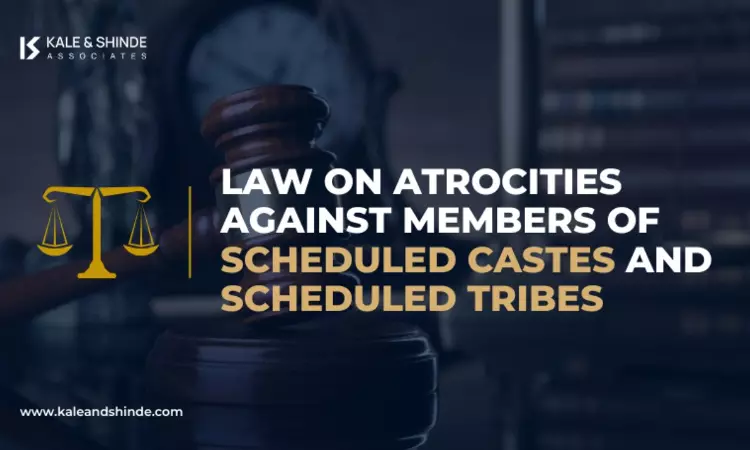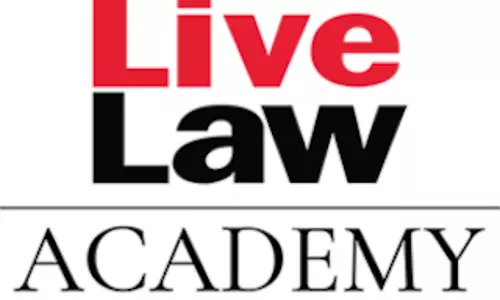Legal Protections For Scheduled Castes And Scheduled Tribes: Understanding The Framework
LIVELAW NEWS NETWORK
16 April 2025 6:16 PM IST

A law designed to address the systemic discrimination, social exclusion, and violence faced by marginalized communities of Schedule Casts (“SC”) and Scheduled Tribes (“ST”) was enacted as the Scheduled Castes and the Scheduled Tribes (Prevention of Atrocities) Act, 1989 (commonly referred to as the 'SC/ST Act' or 'Prevention of Atrocities Act'). This was enacted to prevent crimes and atrocities against members of SC/ ST classes in India. It was also enacted to overcome certain loopholes of the existing law i.e. Protection of Civil Rights Act, 1955, Indian Penal Code, 1860 and Untouchability (Offences) Act, 1955 and also revised Protection of Civil Rights Act, 1976 to protect the discrimination against this particular community. Further Acts were subsequently amended in 2015 and 2018.
- Key Objectives of the Provisions:
- Prohibition of Atrocities: The Act seeks to combat offences including coerced labour, sexual abuse, hate speech, social ostracism, exclusion from public areas, and various types of caste-based violence.
- Designated Courts: It creates designated courts for expedited trials and enforces strict punishments for crimes committed against Scheduled Castes (SCs) and Scheduled Tribes (STs).
- Relief and Rehabilitation: The legislation includes provisions for the support and recovery of individuals affected by caste-related crimes.
- Severe penalties: By enforcing severe penalties, the legislation aims to discourage individuals and organizations from engaging in caste-related offenses.
- Investigation Protocol: Violations of the Act are required to be examined by an officer holding the rank of Deputy Superintendent of Police (DSP) or higher.
- Grant of Anticipatory Bail: The general rule is that an 'Accused' is not eligible for anticipatory bail under Section 438 of the Code of Criminal Procedure and 482 of BNSS. However, under this legislation, a person's right to seek anticipatory bail cannot be denied under Section 18 unless it can be established that there is a prima facie case. (Shajan Skaria v. State of Kerala 2024 LiveLaw (SC) 601)
- Age-Old Subjugation:
- Why was the Act Necessary?
India's caste hierarchy historically classified the society into four varnas (or classes). SCs were even below these 4 classes, relegated to the margins of society, branding them as "untouchables" or "Dalits." While STs weren't subjected to untouchability, they faced severe exploitation and marginalization. The zamindari system significantly exacerbated this caste-based discrimination, creating entrenched patterns of oppression against both communities.
- Previous Laws provided inadequate protection:
Prior legal frameworks—from ancient Vedic times through the British colonial era—failed to provide meaningful equality to SC/ST communities. Post-independence legislation, evolving through various amendments, emerged within the constitutional framework to safeguard these vulnerable populations. However, even in 2025, there remains a need to supplement these legislations to ensure robust and practical protections.
- Systemic Equality:
The Act was established to uphold constitutional values of equality and dignity. It provides comprehensive protections against multiple forms of discrimination: social injustices (restricted access to public spaces and traditional routes), personal violations (forced consumption of harmful substances, sexual harassment, physical assault), property crimes, malicious legal proceedings, political disenfranchisement, and economic exploitation.
- Constitutional Provisions:
- This acknowledgement grants specific protections to groups that have been historically marginalized and exploited. These protections encompass preferential access to educational institutions, employment opportunities, and various socio-economic advantages (Articles 15 and 16).
- The Constitution of India ensures that all individuals are treated equally, regardless of their social class, skin colour, faith, gender, or religious beliefs.
- Article 17 of the Constitution of India aims to eliminate the practice of untouchability. The term 'untouchability' encompasses not only the avoidance or restriction of physical interaction but also a wider array of social prohibitions.
- Article 46 of the Constitution of India advocates for the educational and economic welfare of Scheduled Castes (SCs), Scheduled Tribes (STs), and other marginalized groups within society, aiming to safeguard them against social injustice and exploitation.
- Article 338 of the Constitution of India establishes the National Commission for Scheduled Castes. The responsibilities of this commission encompass the following:
- To investigate and oversee all issues pertaining to the constitutional and other legal protections for Scheduled Castes, as well as to assess their effectiveness;
- - To address particular grievances regarding the infringement of rights and protections afforded to Scheduled Castes.
- Article 338-A of the Constitution of India establishes the National Commission for Scheduled Tribes, which operates in a manner akin to the National Commission for Scheduled Castes.
- Supreme Court Judgments on this Issue:
The Act has been interpreted and modified over the years, including through various Supreme Court judgments like
- Subhash Kashinath Mahajan v. State of Maharashtra (2018) 6 SCC 454 - In this case, the Supreme Court of India banned the immediate arrest of a person accused of insulting or injuring a SC/ST member to protect innocents from arbitrary arrest. However, this judgment was reviewed to nullify its earlier judgment and the same amendment of 2018 made by parliament due to widespread protest and outrage of people.
- In Prithvi Raj Chauhan v. Union of India (2020) 4 SCC 727, Supreme Court held that the 2018 amendment was constitutionally valid. Section 18A, which was added by this amendment, was declared constitutionally valid. The Supreme Court noted that the provisions of Section 438 of the Criminal Procedure Code (i.e. the provisions regarding anticipatory bail) do not apply to cases under the Act. However, if the complaint fails to establish a prima facie case for the Act of 1989, the restrictions imposed by Sections 18 and 18A(i) will not be applicable. Additionally, the Court has overturned the earlier ruling in the case of Dr. Subhash Kashinath Mahajan vs. The State of Maharashtra & Anr. (2018).
- A Look at the Evolution of the Law So Far – The 2015 & 2018 Amendments
2015 Amendment:
- This amendment introduced new offences related to atrocities against SC/ST members, which encompass the following actions:
- Garland with footwear
- Denial of access to irrigation resources or forest rights
- - Designating a Scheduled Caste (SC) or Scheduled Tribe (ST) woman as a devadasi
- Caste-based abuse
- Enforcing a social or economic boycott
- Additionally, certain offenses under the Indian Penal Code (IPC) that carry a penalty of less than ten years of imprisonment have been classified as punishable under the Scheduled Castes and Scheduled Tribes (Prevention of Atrocities) Act (PoA Act).
- A presumption has been established regarding these offenses: if the accused has prior knowledge of the victim or their family, the court will assume that the accused was aware of the victim's caste or tribal identity unless proven otherwise.
- Special Courts were mandated to be set up at the district level. Even in districts with a lower incidence of such cases, a special court may still be set up constituted to adjudicate these offenses. All cases are required to be resolved within a two-month timeframe. Appeals from these courts will be directed to the High Court and must be addressed within three months.
2018 Amendment:
In 2018, the Supreme Court mandated that:
- Arrests under the Act are prohibited without prior authorization:
- From the appointing authority in the case of public officials.
- From the Senior Superintendent of Police (SSP) for all other individuals.
A preliminary inquiry must be carried out prior to the registration of a First Information Report (FIR).
The legislation was revised to negate the impact of the Supreme Court's ruling from 2018. In the revised SC/ST Act, the following provisions apply for filing FIRs in instances of atrocities against SC/ST. There is no need for prior approval from appointing authorities for senior police officials, and a preliminary inquiry is not mandatory.
Some more important case laws:
- Asmathunnisa Vs. State of AP, AIR 2011 SC 1905 (para 10)
- Gorige Pentaiah Vs. State of AP, (2008) 12 SCC 531
- Sudama Giri Vs. State of Jharkhand, 2009 CrLJ (NOC) 1250 (Jharkhand)
In above cited case, it has been held that - The phrase "in any place within public view" as stated in Section 3(1)(x) of the SC/ST Act indicates that the individual being insulted must be visible to the public; therefore, their presence is necessary for the offence to be applicable. If the individual is not present, the allegations under Section 3(1)(x) do not hold.
In Mata Sewak Vs. State of UP, 1995 AWC 2031 (Allahabad) (Full Bench) it has been held that knowledge and not mens rea is an essential ingredient of the offences of Section 3(1) and 3(2) of the SC/ST (Prevention of Atrocities) Act, 1989.
In Asmathunnisa vs. State of A.P. AIR 2011 SC 1905 it has been held that the words used in sub section (x) of section 3 (prior to the amendment of 2016) are not in public place, but within public view which means the public must view the person being insulted for which he must be present and no offence on the allegations under the said section gets attracted.
In Masumsha Hasanasha Musalman Vs. State of Maharashtra, AIR 2000 SC 1876 it has been held that In order for the provisions of Section 3(2)(v) of the Act to apply, it is essential that the victim is an individual who is a member of a Scheduled Caste or a Scheduled Tribe. Furthermore, the offense under the Indian Penal Code must be perpetrated against this individual specifically due to their status as a member of a Scheduled Caste or a Scheduled Tribe. Without the presence of these elements, an offense under Section 3(2)(v) of the Act cannot be established.
In Ashabai Ganeshrao Khote vs. State of Maharashtra, (2000) 5 Bom 113 in this case it has been held that prosecution must establish that the accused was not member of SC/ST and the aggrieved person was member of SC/ST.
In State of MP Vs. Ram Kishna Balothia, AIR 1995 SC 1198 Supreme Court held the offences under the SC/ST (Prevention of Atrocities) Act, 1989 form a distinct class of offences by themselves and cannot be compared with other offences.
In Munna Pandey Vs. State of UP, 2008 (62) ACC 637 (All) it held that where the accused had allegedly committed offences u/s 323, 504, 506 IPC and 3(1)(x) of the SC/ST (Prevention of Atrocities) Act, 1989, the Allahabad High Court has ruled that since the offence u/s 3(1)(x) of the 1989 Act is punishable with sentence upto five years and fine only, Magistrate has got jurisdiction to grant bail for the offence u/s 3(1)(x) of the aforesaid Act irrespective of the fact that the offence is triable by the Court of Sessions.
In Pushpa Vijay Vonde Vs. State of Maharashtra, 2009 CrLJ 3204 (Bombay) it has been held that following the establishment of facts during the investigation, the Investigating Officer has the discretion to document whether the accused is affiliated with a Scheduled Caste or Scheduled Tribe. Once a final opinion is reached, the Court has the authority to either accept this opinion or take cognizance of the matter. Even if a charge-sheet is submitted during the charge consideration phase, the accused may inform the Court that the evidence indicates they do not belong to a Scheduled Caste or Scheduled Tribe. Furthermore, even after charges are framed, evidence can still be presented during the trial to demonstrate the accused's affiliation or lack thereof with a Scheduled Caste or Scheduled Tribe.
In State of Maharashtra Vs. Vijay Chandradhan, 2010 CrLJ (NOC) 104 (Bombay) in this case court held where FIR does not disclose caste of the accused as well as of the complainant, cognizance of the offence under the SC/ST Act could not be taken on the basis of such FIR.
- Issues:
- Police officers have consistently shown a reluctance to register offences under the act.
- Even though the law mandates that special court must be created for speedy trial of cases however only a few states have a special court.
- Sometimes judicial bias is found which is travesty of justice.
- It does not cover the Dalit Christians, who converted into Christianity.
- Low rate of conviction rate.
- Misuse and Challenges:
While the Act is crucial for protecting SCs and STs, there have been concerns about its misuse and other challenges, such as:
- False Cases: Various false cases are filed for property rights. The Supreme Court of India, in their judgments has noted down such kinds of false cases filed against innocent persons.
- High Acquittal Rates: Due to lack of evidence or improper investigation acquittal rates are high however in this acquittal in some false cases are also included.
- Safeguards for Preventing Misuse: Balancing the need for stringent provisions with safeguards to prevent misuse. There must be stringent punishments prescribed in the law for misusing the provisions of this Act, thereby leading to a prevention of misuse..
- Inadequate Justice Delivery: Non-registration of FIR, delay in filing complaints, delay in charge sheet, investigation delay, etc are main reasons for justice to not be delivered to the victim.
- Rise in Crimes: Despite having stricter provision crime rate as per NCRB in going high.
To illustrate these points, in Subhash Kashinath Mahajan Case (2018) on SC/ST (Prevention of Atrocities) Act, the Supreme Court has opined that SC/ST Act was being misused and checks were needed to prevent such misuse. The Act had become a tool to persecute innocents and public servants for political and personal gains.
It also provided guidelines for preventing the misuse of the Act, such as:
- Preliminary inquiry at the level of Deputy Superintendent of Police (DSP) was required to verify the authenticity of the case before registering FIR.
- A person can be released on anticipatory bail unless a prima facie case of crimes or atrocities is made out.
- No FIR should be registered against government servants without the approval of the appointing authority.
- SC/ST (PoA) Act, has to be interpreted in a manner which will ensure that “casteism is not perpetuated” through the implementation of the law.
An important point to note: In the case of Subhash Kashinath Mahajan v. State of Maharashtra, the socio-cultural dynamics surrounding caste-related atrocities, were not brought to the notice of the Judges. The ruling was solely based on what happened in various High Court decisions. It correlated the high acquittal rates with a significant number of false allegations. However, an increase in acquittals should not be interpreted as indicative of the falsity of the cases. The weakening of the SC/ST (PoA) Act would severely undermine social justice. Given the inherent power imbalance within India's caste system, present in every village, ensuring thorough investigations and prompt, effective trials is exceedingly challenging. Such dilution would render the Act ineffective and reverse the progress made in social transformation.
The Prevention of Atrocities Act, 1989 stands as a cornerstone of India's commitment to protecting its most vulnerable communities. While the legislation has made significant strides in combating caste-based discrimination, implementation challenges persist—including case backlogs and allegations of misuse—that must be addressed with strategic reforms.
Elevating awareness among SC/ST communities about their legal rights remains paramount. Justice delayed is justice denied; therefore, expediting case resolution and ensuring accountability for perpetrators is essential for realizing the vision of a truly equitable society. The Central Government's periodic advisories to States and Union Territories underscore the collaborative governance approach required, respecting constitutional divisions of power where 'Police' and 'Public Order' fall under State jurisdiction per Schedule 7, List II.
The establishment of the National Helpline Against Atrocities (NHAA) at 14566 represents a progressive step toward accessibility and transparency in the grievance redressal system. This toll-free service, provided by the Ministry of Social Justice and Empowerment, serves as both an immediate resource for victims and an educational tool to bridge knowledge gaps about legal protections.
Through strengthened implementation, increased awareness, and institutional support systems, the Act can fulfill its promise of safeguarding dignity and ensuring justice—essential pillars in India's journey toward a society free from discrimination and inequality.
Author: Vishal Vijayrao Kale, Founder & Managing Partner – Kale & Shinde Associates. Views are personal.


